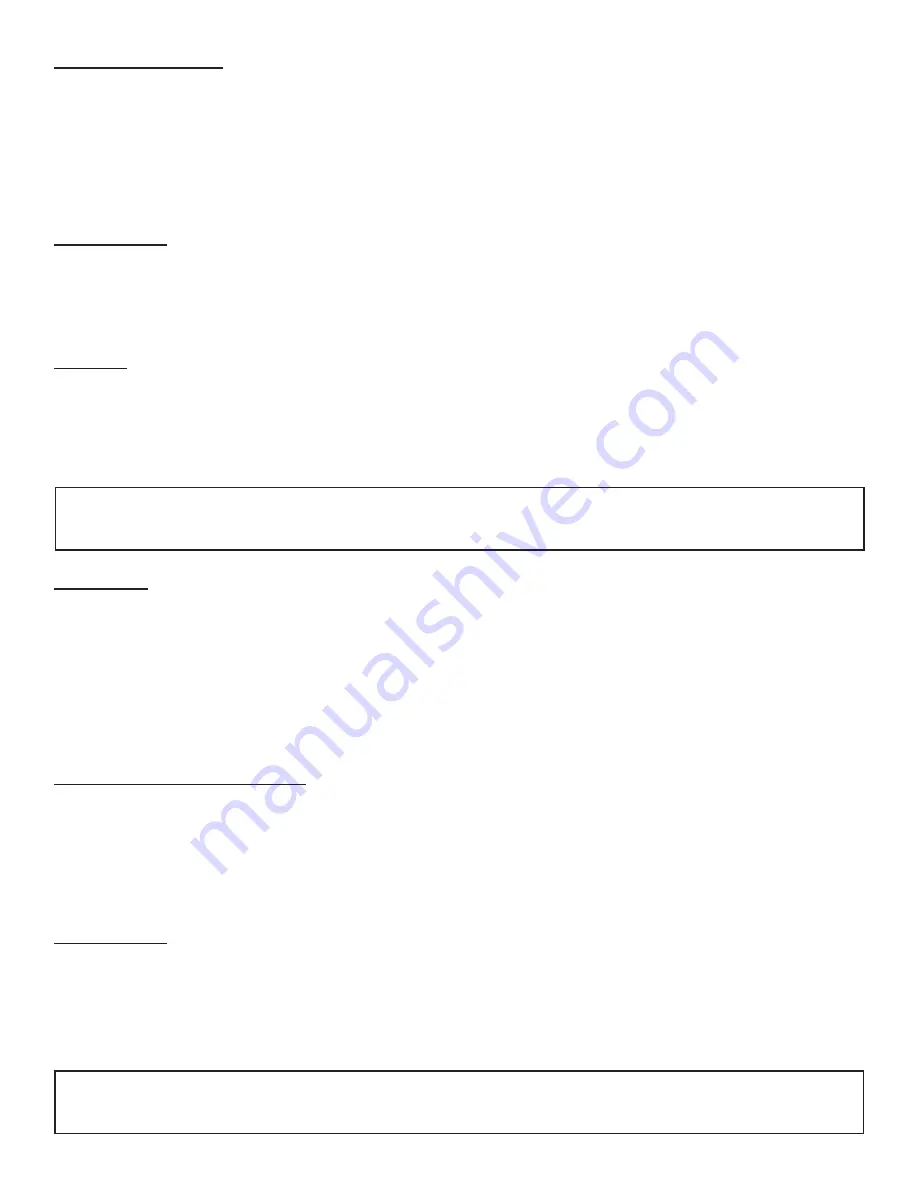
TESTING YOUR WOOD
When the appliance is thoroughly warmed, place one piece of split wood (about five inches in diameter)
perpendicular to the door on the bed of red embers.
Keep the air control full open by sliding it right and close the door. If ignition of the piece is accomplished within
90 seconds from the time if was placed in the appliance, your wood is correctly dried. If ignition takes longer,
your wood is damp.
If your wood hisses and water or vapor escapes at the ends of the piece, your wood is soaked or freshly cut. Do
not use this wood in your appliance. Large amounts of creosote could be deposited in your chimney, creating
potential conditions for a chimney fire.
THE FIRST FIRES
The fresh paint on your appliance needs to be cured to preserve its quality. Once the fuel charge is properly
ignited, only burn small fires in your appliance for the first four hours of operation. Never open the air control more
than necessary to achieve a medium burn rate.
Make sure that there’s enough air circulation while curing the appliance. The odors may be smelled during the
first 3 or 4 fires. During curing people and animals with lung problems should take caution.
IGNITION
Place several crumpled sheets of paper in the center of the combustion chamber. Place 8 to 10 pieces of small
dry kindling wood over the paper in the form of a tent. No chemical product should be used to light the fire.
Before igniting the paper and kindling wood, it is recommended that you warm up the chimney. Twist together
a few sheets of newspaper into a torch. Light up this paper torch and hold it as close as possible to the back of
the combustion chamber to warm up the chimney. Once the updraft movement is initiated, you are ready to
ignite the appliance by lighting the paper and kindling wood inside the combustion chamber.
RELOADING
Once you have obtained a good bed of embers, you should reload the unit. Bring the red embers to the front
of the appliance and reload the unit. For optimal operation of your wood appliance, we recommend you to
operate it with a wood load approximately equivalent to the height of fire bricks. Creosote - Formation and
Need for Removal - When wood is burned slowly, it produces tar and other organic vapors, which combine with
expelled moisture to form creosote. The creosote vapors condense in the relatively cool chimney flue of a slow-
burning fire. As a result, creosote residue accumulates on the flue lining. When ignited, this creosote makes an
extremely hot fire. The chimney connector and chimney should be inspected at least once every two months
during the season to determine if a creosote build-up has occurred. If creosote has accumulated (3mm or more),
it should be removed to reduce the risk of a chimney fire.
TO PREVENT CREOSOTE BUILD UP
• Always burn dry wood. This allows clean burns and higher chimney temperatures, therefore, less creosote
deposit.
• Always check for creosote deposit once every two months and have your chimney cleaned at least once a
year.
If a chimney or creosote fire occurs, close all dampers immediately. Wait for the fire to go out and the appliance
to cool. Then, inspect the chimney for damage. If no damage results, perform a chimney cleaning to ensure
there is no more creosote deposits remaining in the chimney.
ASH DISPOSAL
Ashes should be removed from the appliance every few days or when ashes get to 2 to 3 inches deep. Always
empty the appliance when it is cold, such as in the morning. Ashes should be placed in a metal container with
a tight fitting lid. The closed container of ashes should be placed on a non combustible floor or on the ground,
well away from all combustible materials, pending final disposal. If the ashes are disposed of by burial in soil or
otherwise locally dispersed, they should be retained in the closed container until all cinders have thoroughly
cooled. Other waste shall not be placed in this container.
Warnings: Never overfire your appliance. If any part of the appliance starts to glow red, over firing is happening.
Readjust the air intake control at a lower setting. The installation of a log cradle or grates is not recommended
in your wood appliance. Build fire directly on firebrick. Never put wood above the firebrick lining of the firebox.
CAUTIONS:
• Ashes could contain hot embers even after two days without operating the appliance.
• The ash pan can become very hot. Wear gloves to prevent injury.








